#East Central Rail
Video
Junior G Boat by Citizen of the Galaxy
Via Flickr:
Sure they looked better in Harvest Yellow, but I'll take a U18B any color they come in. Maine Central No. 406 wears the Big G at East Deerfield, MA on 13 July 1984.
#mec#maine central#guilford rail system#1984#trains#freight train#history#east deerfield#massachusetts
15 notes
·
View notes
Text


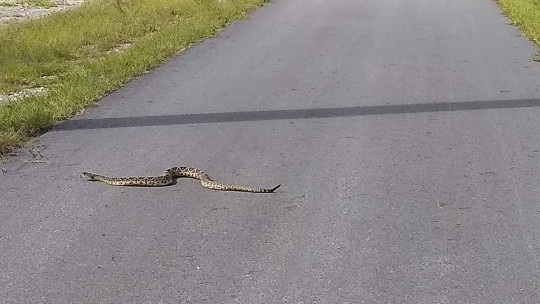



Critters of the East Coast Greenway II aka The East Central Regional Rail Trail out of Titusville, Florida to all points east, west, north, and south!
Pygmy Rattlesnake
Cottonmouth
Eastern Diamondback
#snakes#eastern diamondback#cottonmouth#water moccasin#titusville#spacecoast#florida#brevardcounty#centralflorida#cycling#biking#east central regional rail trail#east coast greenway
3 notes
·
View notes
Text
society if i revised for my 3 exams tomorrow instead of making a tube line again
#listen though. newbury park ilford barking. insanely needed axis. then stops in beckton and plaistow along the A12. then canning#town canary wharf but from canary wharf to surrey quays to create a triangle transfer with the east london and jubilee to reduce#congestion and overcrowding. then a station in bricklayers arms one at borough. then north south bank-cannon street#then farringdon and then euston - euston square. one at baker street one outside lord's cricket ground one at queens park.#then at harlesden and terminating at wembley park#perfect jubilee relief line and also connects national rail services at ilford and barking together and to the central line at newbury park
3 notes
·
View notes
Text
ज़रूरी सूचना, 2 दिन पटरी पर नहीं दौड़ेगी 3 ट्रेनें, रद्द की गई
बिलासपुर। दक्षिण पूर्व मध्य रेलवे के बिलासपुर मंडल ने कटनी लाइन में चलने वाली तीन ट्रेनों को रद्द कर दिया है. 4 और 11 जून को इन ट्रेनों को रद्द किया जा रहा है. जिन ट्रेनों को रद्द किया गया है वह गरीबों की ट्रेन कही जाती है. इसमें छोटे छोटे स्टेशनों के मुसाफिर यात्रा कर अपने रोजगार के साथ ही अन्य जरूरी काम करते हैं.
4 और 11 जून को शहडोल बधवाबारा, लोरहा चंदिया रोड स्टेशन के बीच समपार फाटक को…
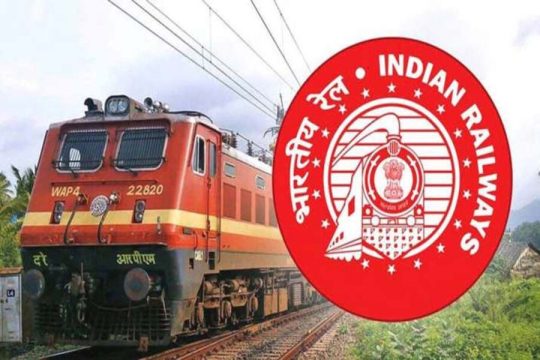
View On WordPress
#bilaspur#BILASPUR BIG NEWS#BILASPUR DIVISION#BILASPUR NEWS#BILASPUR RAIL DIVISION#Breaking Hindi News#indian railways#Latest News in Hindi#SOUTH EAST CENTRAL RAILWAY#Train cancelled list#videos#दक्षिण पूर्व मध्य रेलवे#बिलासपुर#बिलासपुर न्यूज़#बिलासपुर बिग न्यूज़#बिलासपुर मंडल#बिलासपुर रेल मंडल
0 notes
Photo
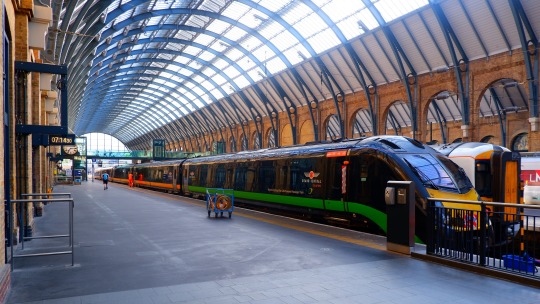


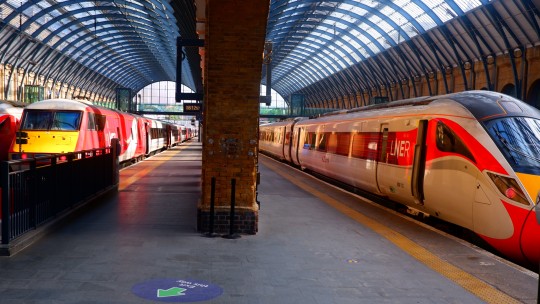



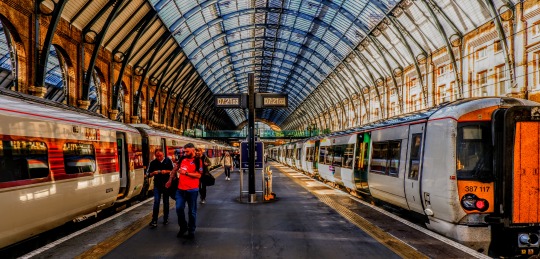


One of the most iconic railway buildings celebrates its 170th birthday alongside the Queen's Platinum Jubilee, and having got a few photos with the intention of featuring it on my travels through London earlier this year, I completely forgot about it (as I do) until last month. Then, doing a little research, I found out that it opened on the 14th of October. "Very well, I thought, I'll wait till October then." Surprise, surprise, I forgot about it again, until today, and lo & behold, it's the 14th of October. So alongside a few feature photos of the lovely architecture and the variety of trains using the station, here's a flashback to the 170th anniversary celebrations at King's Cross over the Platinum Jubilee Weekend, featuring posters showing photos of the station as it looked in various eras, as well as performances of music from the different eras of Queen Elizabeth's reign.
Built by the Great Northern Railway as the terminus for the East Coast
Mainline, the station has seen some of the grandest & most famous trains in Britain at its platforms from Flying Scotsman & Mallard to the Intercity 125, Intercity 225, and more recently, the IET Azumas. It is the terminus for services on the ECML to Scotland & Northeast England as well as Great Northern Mainline services to West Anglia.
Architecturally, King's Cross was a bold statement at the time of construction, but today, it's something of a reminder that classical architecture doesn't have to be all grand but not very functional. It's subtle detailing and ample glass give it a hint of modernity which also goes to show how we could design buildings that adhere to the principles of classical architecture while meeting the demands of modern society.
#King's Cross#railway station#London#Great Britain#LNER#East Coast Mainline#Great Northern Railway#classical architecture#British Railways#heritage#culture#National Rail#Grand Central
1 note
·
View note
Note
I visited Japan and China recently. In Japan, I had a lot of fun riding the 'JR' Shinkansen from Osaka to Tokyo. In China, I had lots of fun riding the 'CR' bullet trains all over the beautiful countryside. However, I'm now back here in the stateside, and I have a burning question...
How come the USA doesn't have commercial passenger bullet train service?
I thought we were to greatest country on earth, according to a certain billionaire former president of ours who is now fighting to keep himself out of prison and trying in vain to get himself back into power (he wants the one P not the other P). If all the other major global powers and some non-powers have bullet trains, and we're supposedly the greatest country on earth, why do we in the USA do not have even one bullet train???
Kudos in advance for answering this question as quickly as you can.
There are several reasons but lets look at 4, Firstly, in the early 2010s, there was a push for High-speed Rail, The Obama Administration even promised to pay for several projects, most notably High-speed Rail between Chicago and Minneapolis, but the Governor of Wisconsin told Obama that he didn't want the money to build high speed rail.
Next there's the California High-speed Rail project which is currently building High-speed Rail between LA and San Francisco, due to outdated environmental laws, and constant suing from land owners in the central valley, the project took years to begin construction and is going wildly over budget and isn't expected to finish with phase 1 till the late 2030s
Florida in the 80s through to the 2000s had plans for HSR between Miami and Tampa, but that was canceled due to Rick Scott being against the project and the Florida East Coast Railway refusing to cooperate
Finally there is the Northeastern Acela Corridor, which has some high speed sections but hasn't been able to increase speeds on much of the track due to local opposition and a lack of funding, there will be some newer trains somewhat soon though that will increase speeds
95 notes
·
View notes
Text
All Aboard: The Journey of Locomotives in the U.S. 🚂💨💨💨

A train's horn and the rhythmic clatter of wheels on rails are more than just sounds. They are echoes of an era that transformed America. Delving deep into the National Archives Catalog, we unearth treasures that tell the tale of the nation's love affair with locomotives.

The dawn of American rail travel began in the early 19th century. The Baltimore and Ohio Railroad, founded in 1827, marked the nation's entry into the world of rail. Locomotives like the Tom Thumb demonstrated the potential of train travel, even if they occasionally lost races to horse-drawn carriages.
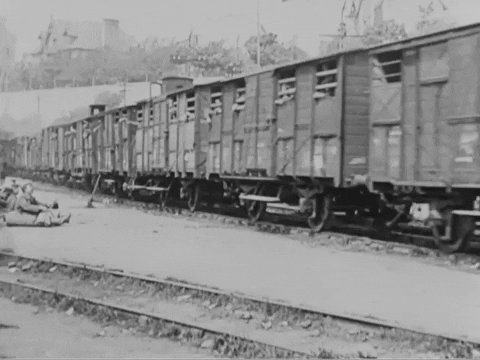
By the 1860s, the monumental task of connecting the East to the West was achieved with the First Transcontinental Railroad. This incredible feat, symbolized by the golden spike at Promontory Summit in Utah, stitched the fabric of the nation together, making cross-country travel faster and more accessible than ever before.
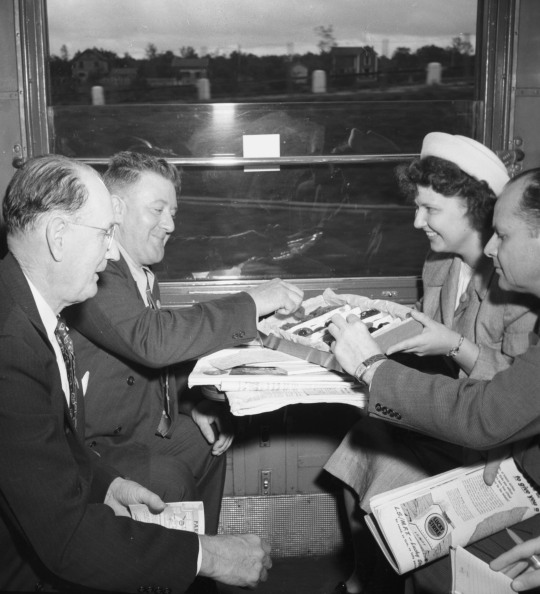
The golden age of railroads ushered in luxurious train journeys. Trains like the Pullman Sleeping Cars offered Americans unprecedented comfort, making long-distance travel not just bearable but enjoyable. Meanwhile, iconic stations like New York's Grand Central Terminal and D.C.'s Union Station became symbols of the grandeur and promise of rail travel.
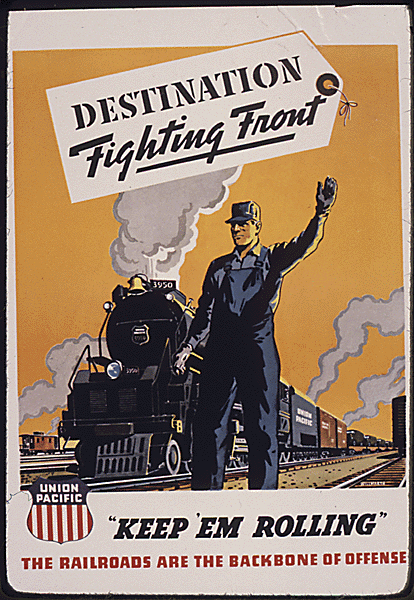
As the nation progressed, so did the role of trains. They were vital in transporting troops during wars, crucial for trade, and a lifeline for communities far from urban centers. However, with the advent of the 20th century and the rise of cars and airplanes, the prominence of train travel waned.

From the smoky beginnings in the 1800s to the streamlined trains of today, locomotives have been an integral part of America's journey, carrying not just people and goods, but dreams and hopes of a constantly evolving nation.
FURTHER READING:
Freedom Train https://prologue.blogs.archives.gov/2015/07/01/new-web-exhibit-on-the-freedom-train/
RFK Funeral Train
199 notes
·
View notes
Text
Holy crap. I actually finished writing a story for the first time in AGES.
So, I'm gonna trat you all to the teaser for the draft post. Want the rest? Go hit the post link.
Old Ghosts
I'd felt bad about leaving this one to wait for so long, but to be fair, I hadn't known. You hear enough 'spectral hitchhiker' urban legends that you just tend to throw it off and dismiss it out of hand. Until someone had mentioned where. That was when memories clicked back together like tumblers in a lock and I knew where I had to be going next.
Central Washington. Just a bend of the road in westbound I-90, a bit west of vantage, still east of the pass by a good hour and change. It was the detail of the old power station and the trestle bridge that ran over the freeway that really picked it out in my head.
The problem was, it took timing. you didn't find ghosts by looking for them, you found them by being in the right place at the right time. I knew both, one from motorist stories, and the other from what I vaguely remembered, but it had to be exact. It was the fourth time when I finally got it right. Coming from the east, headed west, all intent on getting to Seattle before 9pm, and then there I was, entering the turns just past the windmills that now churned along the side of the road just past sundown, the sky that deep deep early spring blue that it hits just in between the sun disappearing and full black settling in. Thankfully they still hadn't installed the giant LED streetlamps over this stretch of I-90 yet. I don't know if those coming on would have broken the mood or not, but as I moved onto the shoulder and slowed down in the last turn right at the power station I could feel it. That tight whine in the back of the ear that I'd always associated with high-tension lines and towers, but had, in the last couple years, become an indicator of a few other things as well. I brought the car into the last turn, a left that took the freeway under the old trestle bridge now trail bridge in a few hundred more feetand parked it on the shoulder next to the guard rail, switching on the hazard lights and doing my best to hopefully be far enough off the freeway for anyone who slid a little too far right on the corner.
I stepped out, feeling the March wind rip at my skirt and coat, and was immediately glad I'd grabbed the thermal leggings underneath this time around. At least there wasn't snow. and then I saw it about fifty feet ahead of me- part of the guardrail twitched for a second, like a slightly-out of tune tv station, intact one moment, and a wide open broken gap in the rail the next, then back to unbroken steel on 4x4 supports. Fuck. I'd have to time this. I slowly approached it, keeping a count in my head. solid for thirty seconds, then intermittent flashing, then broken for a clean five seconds, back to intermittent and then solid. on a loop, thankfully so I wouldn't just be guessing, but still it was tight enough that I had reason to worry. try and walk though at the wrong time and I'd just hit the barrier of the rail and probably throw the whole thing off, wreck tonight completely. I watched it loop again, checking against the count in my head. When I got to twenty seconds of solid I closed my eyes and started counting down. Sometimes going in blind helped. Eight seconds. I took two steps forward, edging closer. Five. one more step, lining myself up with the gap I remembered. Three. Deep breath. One. I stepped forward, hard and fast, boots turning the loose roadside gravel ans I walked straight forward, through air that seemed to almost resist me for a moment, and then nearly fell down the steep slope on the other side, eyes opening in startlement as I slid for a few feet before catching myself.
Want more? Go get it here: https://www.patreon.com/posts/old-ghosts-102735746
34 notes
·
View notes
Text


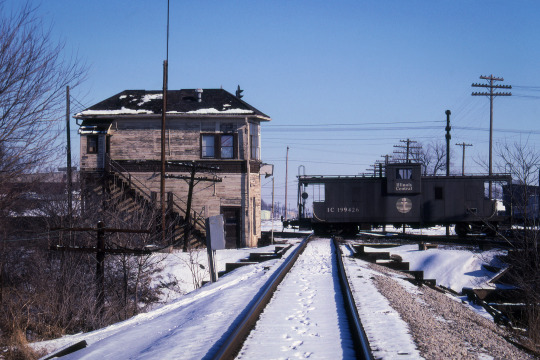
Triple Crossing
These images come from an intriguing spot if one is a rail enthusiast: the triple crossing at Tuscola, Illinois.
This is where the Illinois Central double track ran in a north-south direction; the B&O crossed moving east-west, and the C&EI (later MoPac) cut across at an angle to the previous two lines.
The first image shows an overview of the track layout as seen from the highway overpass nearby—the old track arrangement is still in play here, but preparations are being made for the simplified alignment soon to come. This will merge the B&O and C&EI prior to crossing IC, thus having fewer diamonds to maintain.
The latter two images show a southbound train of the IC: I shot the first still from the highway overpass while the second image was taken from track level, standing on the B&O. These were taken in the so-called death-star era, of which I have very few images.
Three images by Richard Koenig; taken January 1991.
#railroadhistory#railwayhistory#illinoiscentral#filmphotography#grainisgood#baltimore&ohio#b&o#c&ei#MoPac#Missouri Pacific#tuscolaillinois#tuscolail#tuscola#mainlineofmidamerica
45 notes
·
View notes
Text


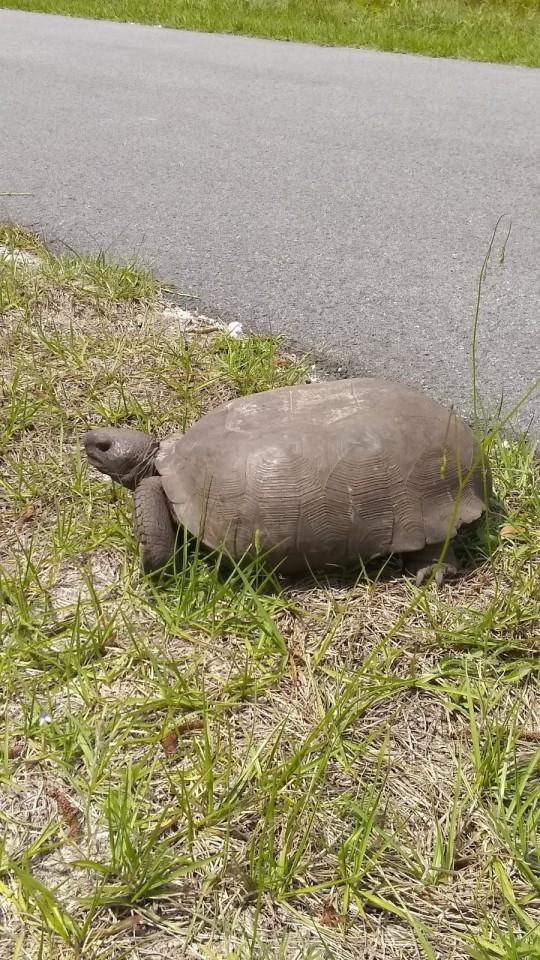

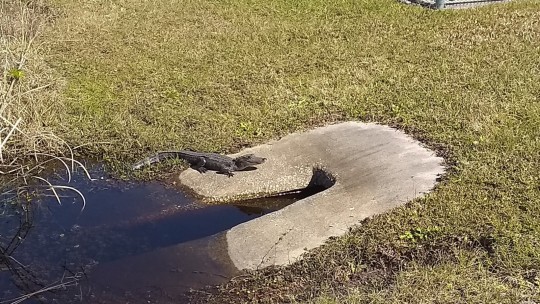


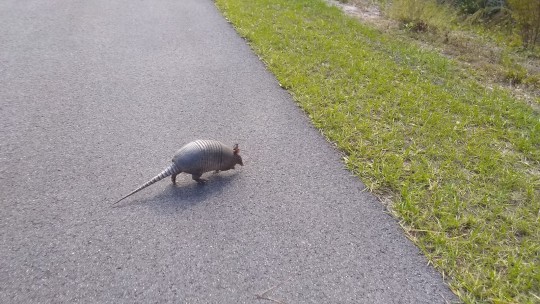

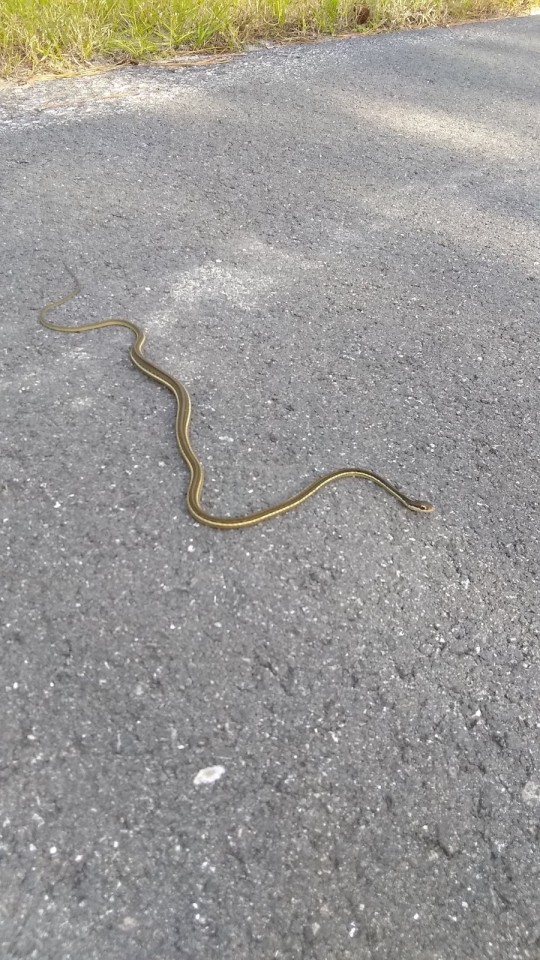
Critters of the East Coast Greenway aka The East Central Rail Trail from Titusville, Florida to Daytona Beach, or Tampa/St Pete.
Eastern Diamondback
Pygmy Rattlesnake
Cottonmouth
Corn Snake?
Armadillo
Gopher Tortoise
Eastern Box Turtle
Alligator
#snakes#eastern diamondback#cottonmouth#pygmy rattlesnake#gopher tortoise#titusville#spacecoast#florida#brevardcounty#centralflorida#east coast greenway#east central regional rail trail
5 notes
·
View notes
Text



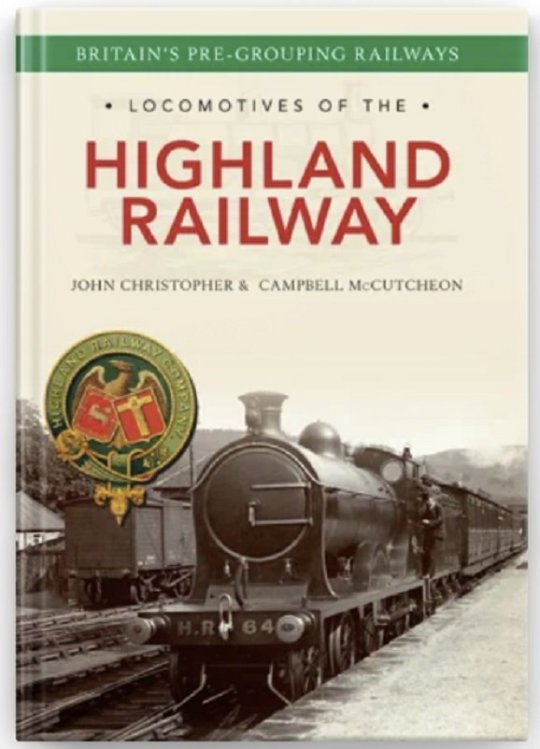

On February 1st 1865 the Highland Railway was formed from the amalgamation of Inverness and Perth Junction and the Inverness and Aberdeen Junction Railways.
Back in the day every region had it’s own local railway company covering the different areas around the country. The Highland Railway ran from Perth in Central Scotland north to Inverness and then on up the east coast to Wick and Thurso. From Dingwall, the railway ran west to Kyle of Lochalsh to serve Skye and the Western Isles. From Inverness, another line ran east to Keith, where it connected with the line to Aberdeen. Several branches were built from this core network to serve nearby towns.
This is a longer post than I normally put together but hope you get an idea of how all these wee companies ran, and ended up becoming the one company, before of course the bigger companies ate them all up. Some of the stations are now gone, but others mentioned, like Kingussie, Nairn, Keith and Dunkeld survive to this day, and I often pass through them on my travels north. It also gives us an insight intothe infamous Beeching cuts in the 60’s which butchered the rail network, if Beeching had his way there would be no railways beyond Inverness!!
Inverness was always the centre of the Highland Railway. It was the company’s headquarters and principle station. All trains led to Inverness.
The original proposals to construct railways to Inverness were made in the mid-1840s. Rival routes were proposed from Perth and Aberdeen . The Perth & Inverness Railway was considered too hilly for the locomotives of the day, but the Great North of Scotland Railway (GNSR) from Aberdeen was authorised. The GNSR struggled to raise capital in the post-railway mania period and eventually started construction as far as Huntly in 1852, opening that line in 1854.
The people of Inverness then stepped in and started building their own line from the Inverness end, initially as far as Nairn, the Inverness & Nairn Railway (I&N) was opened on 6th. November 1855 but by then plans were being made to extend this railway to meet the GNSR. After some discussion, the Inverness & Aberdeen Junction Railway (I&AJ) was promoted to build the line from Nairn to Keith where it met the GNSR extension from Huntly. The I&AJ was completed on 18th. August 1858,when it took over the working of the I&N.
The people of Inverness were never satisfied with the long journey round via Aberdeen , especially as the GNSR’s station was half a mile from that of the line from the south and connections were not always maintained. Thus was born the Inverness and Perth Junction Railway (I&PJR) which ran from Forres via Grantown, Kingussie and Drumochter summit to Dunkeld where it met with end on with the Perth and Dunkeld Railway which had opened in 1856. The I&P was authorised in 1861 and opened just two years later, being worked from the outset by the I&AJR. The two companies amalgamated on 1st. February 1865 to form the Highland Railway.
Meanwhile construction northwards from Inverness had already started, with a line to Dingwall (1862), Invergordon (1863), Bonar Bridge (1864), Golspie (1868), Helmsdale (1871) and Wick and Thurso (1874). Westward from Dingwall, the Dingwall & Skye Railway was opened to Strome Ferry in 1870.
In the 1890s, two additions were made to the main network. The direct line from Aviemore over Slochd to Inverness was completed in 1898, a year after the Skye line was extended to the present terminus at Kyle of Lochalsh. Several branches were opened from these main lines over the next 40 years, taking the final length of the system to some 242 route miles.Tourist traffic has always been a major source of income for the railways in the Highlands . The Highland Railway developed its own hotels at Inverness , Dornoch and Strathpeffer. It offered combined tours in conjunction with the steamer services of David MacBrayne. Each August it had to contend with the annual migration north for the ‘glorious twelfth.’
The railway played a major part in the First World War, when the Grand Fleet was stationed at Scapa Flow in the Orkney Islands . Worn down, like many other railways in the country, it became part of the London , Midland and Scottish Railway in 1923. The LMS continued to develop the lines, introducing dining cars and speeding up services. The Second World War again imposed a considerable strain on the lines.
On the nationalisation of the railways, the Scottish Region of British Railways took over. Soon the development of road transport made a significant impact on the use of the railway. The closure of branch lines, which had started in the 1930s, continued. The Beeching Plan of 1963 envisaged the closure of all lines north of Inverness , but this was not approved because those lines still provided a lifeline in winter. The old route from Aviemore to Forres and a number of intermediate stations on the main lines, were closed. Otherwise the main system remained intact, as it does today. Currently operated by ScotRail, the lines continue to provide a vital link to locals and bring many tourists to the area.
The Highland Railway was well known for its locomotives. Working the steep gradients of the main line, in particular, was always a challenge. Add strong winds and snow and the problems became even worse. The railway introduced the first 4-6-0s to the British Isles, commemorated in the preserved No.103 at the Glasgow Transport Museum . In the 1930s, the LMS Black 5s, locally always called “Hikers”, immediately proved their worth. The isolated nature of the country led British Railways to implement complete dieselisation early in the modernisation plan.
Today class 158 and 170 diesel multiple units work most of the trains, but you can still retire to bed in a sleeper on the line out of London Euston and wake up to the sound of a Class 67 struggling up Drumochter.
39 notes
·
View notes
Text

MEC Monday
The early stages of power sharing during Guilford Transportation Industries attempt at ruling the northeast's rail systems is evident here as this Delaware & Hudson freight departs East Binghamton, NY crossing the Susquehanna River for points north with Maine Central power head up.
November 1984
27 notes
·
View notes
Text

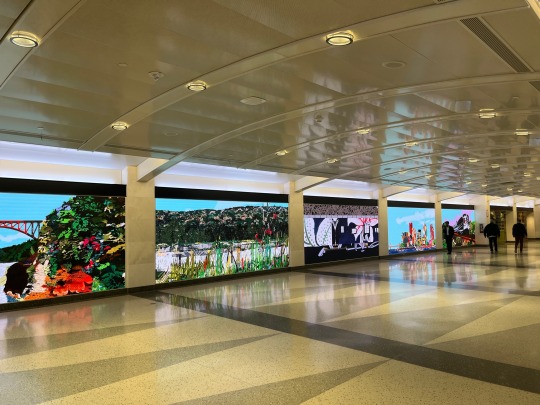
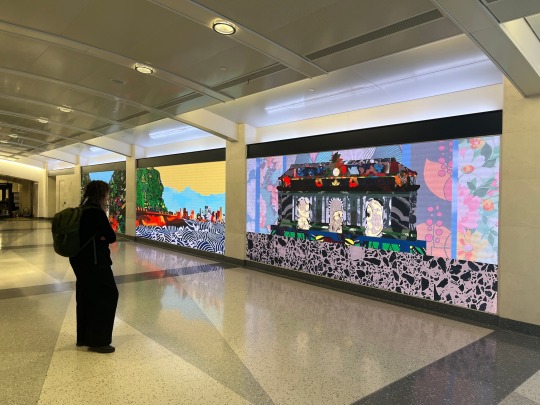
New artwork has arrived in Grand Central Madison’s Cultural Corridor! In her newly commissioned five-screen digital artwork, Eirini Linardaki depicts the vitality of New York City and its verdant surroundings in “Diaphanous Pareidolia.” The artist’s self-described “digital animation journey” uses scanned images of multi-patterned and multi-colored textiles sourced from around the globe to reflect the “multicultural tapestry” of the city, constructing vibrant and imaginative worlds through which subway and rail lines traverse. The central screen depicts Grand Central Terminal from its construction to its present status as a bustling underground transit hub, bookended by depictions of Metro-North and Long Island Railroad trains transporting passengers to and from the city. The collages offer panoramic views of the East River and the dynamic landscape of Long Island City, as well as the serene beauty of upstate New York.
The work is presented by MTA Arts & Design with technical support from ANC Sports.
📸2-3: MTA A&D
20 notes
·
View notes
Text
AMY’S BRIDGES

how are you supposed to cross the river in east london?
tower bridge is the last bridge over the thames until the big ol’ suspension bridge way further out. everything else here is tunnels (mostly)
for road tunnels, there’s the rotherhithe tunnel - the tenth most dangerous tunnel in europe due to lax safety features, where large vehicles including busses are banned, and “a rare example of a road tunnel where traffic, pedestrians and cyclists all share the same bore”. for the love of sin, don’t go in that hole. then there’s the blackwall tunnel for road traffic only, which only one bus route uses, and it’s under-construction neighbour the silvertown tunnel, the road traffic-only worst tunnel ever that’ll increase congestion in the docklands, won’t benefit drivers with an easier route, and won’t ease congestion out of blackwall due to not offering alternative modes bar busses
so, then there’s the tunnel of the windrush line, crossing from rotherhithe to wapping and connecting to the DLR and the jubilee. but this line serves central-south london, not south east, where it doesn’t connect to anything. its utility as a crossing in-and-of-itself is really only for the people very close to it anyway. but there’s the jubilee - when approaching from waterloo way on this is a good connection to canary wharf and the dlr. but its last station before the tunnel is at canada water, over a kilometre before the river. it’s worthless as a crossing. out of north greenwich (aka Dome) it’s got two tunnels to canary wharf and canning town - but the only reason you’ll have to cross the river there is if you happen to find yourself on the peninsula. which is why it’s fucking ridiculous that mayor disgraced journalist racist cunt built his zip line there - basically fucking mirroring a route between two tube stations. there is the elizabeth at the end of the docklands, but i don’t know if anyone would use it for the only purpose of crossing the river there, because it’s served by the only ray of hope, the DLR, which plugs greenwich into canary wharf and woolwich into the royal docks. and that’s yer lot
SO
with such awful crossings, the two halves are totally blown apart. road traffic needs to happen, yes, but in a dense cityscape people need to be on the transit systems to reduce the burden. what can we do?
the pool of london is dead. big ships do not need to go up there. london bridge has a clearance of ~9m for river boats, so any bridge we build further out doesn’t need any more clearance. this does mean the Belfast will have to move, unless we’re okay with trapping her in. the top of rotherhithe to limehouse is the best place for a mass transit-only bridge, it may be narrower than tower bridge, and connect two areas that are totally splayed open. there should be some sort of transit mode going vertically from limehouse (for the dlr), up mile end and forking to either hackney or stratford, and down to surrey quays, and then forking to greenwich for the dlr there and west laterally, either north-ish up to elephant & castle or south-ish to brixton, or better yet, both. i say mode because a lot of things could work here, but the best would be a mix of things. here’s my idea
amy fuck presents the Limehouse Bridge

with a length-over-water of 250m, this carfree bridge connects a major transit avenue to an area prime to host connections for the people of southeast london. from the centre of limehouse, exactly where the rotherhithe tunnel’s bendy route emerges, the road south intersects with Cycle Superhighway 3. from CS3, we’ll bulldoze the tired-looking building blocking the view, and fly over to rotherhithe, bulldozing some gentrified townhouses to cut past a playing field to have plugged in to both rotherhithe street and salter road
i propose two primary pubtrans modes using the bridge: the dlr, and trams. expanding the heavy tram network, often more akin to light rail, will be vital to making the transit of central-south london as good as the north, and connecting up the dlr will cement its use in the southeast as well as the northeast
i’ll cover my dlr proposals first, though, perhaps the name docklands would have to be dropped at this point. with possibly a light rail route up north, from the limehouse bridge the light rail network can return round surrey quays to connect into greenwich, creating a vital and necessary corridor. in addition, from greenwich the route can continue to woolwich and the thamesmead extension, creating a lateral backbone to ensure usage of the dlr’s tunnels rather than the road tunnels. in addition, the lateral routes can provide vital transport for the greater southwark area with two branches, one forming a new corridor to elephant & castle, through an area with appalling connections relative to its centrality, maybe even continuing onwards to waterloo or vauxhall, or even to parliament itself. the second is to serve as an area backbone for communities, through bermondsey, peckham, camberwell and brixton, perhaps continuing to battersea or closing the loop at vauxhall. the limehouse bridge will be the linchpin of this new system, its connectivity bringing rotherhithe and the surrey quays to life, becoming a counterweight of humanity against the looming towers of canary wharf

the heavy tram systems i propose, however, i will not illustrate. because i believe they should spread out from their start in wimbledon, croydon and beckenham to form a much larger network for south london, replicating, surpassing the north’s tube, much larger than i can draw today. from limehouse bridge, the heavy tram network can integrate the areas south of the brixton spoke: crystal palace, dulwich, norwood, streatham, clapham, tooting, bromley, lewisham
all of which leaves limehouse bridge: pedestrians, cycle superhighway, light rail, heavy tram, no motor vehicles. a triumph of modern planning, the aorta of the east
so with the dlr from this bridge serving the greenwich and deptford regions, no more crossings will be needed here due to the dlr’s tunnel at the end of the isle of dogs. it’s all plugged in - and the dome has the jubilee tunnels, which could be co-opted by any new over-ground “underground” lines to serve the area if they are needed. destroy the fucking cable car. fell it. yell timber
prioritising those heavy trams now, we can connect charlton through silvertown and eastenders with a new tunnel. with the unnecessary silvertown road tunnel opening 2025, more road connections aren’t needed. so - pubtrans from charlton to newham - then heavy trams in the tunnel like it’s a miniature channel tunnel. also feature pedestrian and cycle access, obviously
there had been suggestions that the suffragette line (formerly the goblin) after barking riverside might cross the river to thamesmead, where that dlr extension might go. do it. this has to be commuter rail now, as we’re threading suburbs together. after that, we’re probably well served enough until the dartford suspension bridge
but… cars and road traffic are an unfortunate reality. with ground broken (or water broken?) on the silvertown tunnel, unholy amounts of heavy traffic are going to be funnelled through greenwich and poplar. removing passengers who can be removed can only help us so much. the unfortunate truth is a woolwich road bridge, replacing the ferry, is a good idea. toll it to high hell obviously, but it should help ease congestion that has now been caused by the silvertown. with plentiful other passenger connections, and ensuring anti-car policies are kept up to make sure only people with a damn good reason are driving through the area, this bridge could be helpful. but of course, without any of that, it would be a polluting, congesting disaster. but we were on a spending spree anyway
anyway. bridges
12 notes
·
View notes
Text
GE PowerHaul

After I offered, @valtionrautatiet-official asked me to post some pictures of the locomotive that is nowadays known as the Dr20, used by the private freight operator North Rail in Finland. Here it is in 2012, long before anyone ever even considered sending it to Finland, in Berlin. The reason that it's in Berlin specifically is that it's at Innotrans, the biggest trade fair and exhibition for railroads that exists. At this point it had the paint job of HHPI (Heavy Haul Power International, despite the important sounding name really just one of many European freight rail companies with headquarters in Germany), with their trademark blue and red and their company policy of putting Newton's second law on it. "Project Power" also sounds cool, doesn't it? Well, it turns out they never entered service for HHPI. Way too much history under the cut.
The story behind these eight locomotives is weird and opaque, and there is a lot of stuff we may never know, but on a very fundamental level it seems to be one of the victims of what I call the six-axle diesel curse. This basic of that theory of mine is that it's impossible to sell big, heavy, powerful diesel locomotives, the kind that are so powerful that they need six axles for all the weight from their big engine and diesel tank, in (West) Germany and to a certain extent central and Western Europe, at least nowadays, unless you do it by accident.
The German locomotive industry has wanted to build big six-axle diesel locomotives since the end of steam traction. There was a prototype six-axle version of the V 200, named V 300, in the 1950s, but DB didn't want it (a related but less powerful version was sold to Yugoslavia to haul Tito's private train). For the Americans here, the Krauss-Maffei locomotives of the Southern Pacific and Rio Grande were related to that.
A few years later, in 1962, we get the V 320, a six-axle version of the V 160 locomotive family. The four-axle version was very popular and is still in service, but they only built the prototype of the six-axle version. Interestingly, that one prototype is still around as well, hauling construction trains. Deutsche Bahn was never interested, they preferred the flexibility of having more smaller units. And anyway, they were busy electrifying the busy main lines that would have made the most use of those heavy machines.
In the 1970s Henschel and BBC (the electric equipment one, not the British TV one) built three copies of the DE 2500 both with four and six axles, but those were really more experimental machines.
In the late 1980s and early 1990s, MaK tried to sell their DE 1024, and I actually have a picture of that ne.
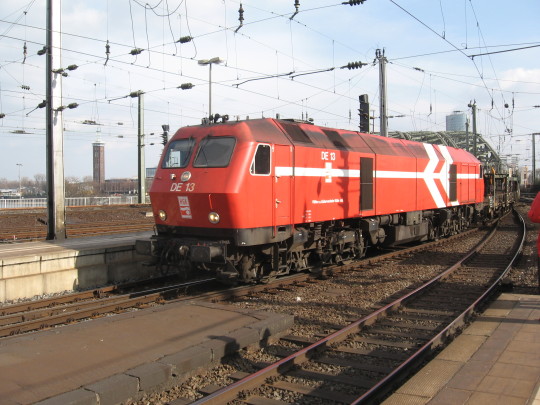
They built three prototypes, and Deutsche Bahn seemed to genuinely toy with the idea… but in the end it was decided to electrify the lines in the (mostly flat) north that hadn't been electrified yet anyway.
And at the same time, the wall fell, and suddenly Germany had access to all the locomotives of the east, now mostly surplus since mostly the industry they served did not survive the transition to western markets. East Germany had bought powerful six-axle diesel locomotives in enormous numbers from the Soviet Union, specifically modern-day Ukraine, and those were available, good enough and already paid for. In particular the class 232 and related, known as "Ludmilla" among rail fans, have proven very useful.
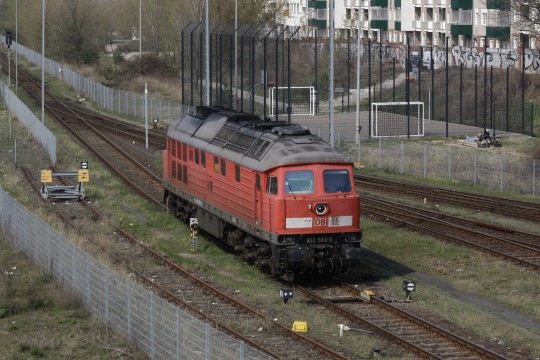
MaK was able to sell an altered version of that locomotive to Norway, but that turned out to be be a huge disaster as they developed a habit of catching on fire. Eventually Siemens (who briefly owned MaK) had to take them back, and since then they've changed hands an astonishing number of times - apparently right now Hector Rail and RDC Autozug have a lot of them. Here's one in Hamburg Altona when it was used on regional trains there.

The three prototypes went to locally owned operator HGK, where two of them also burned down. DB probably dodged a bullet there. Interestingly enough, the only one that didn't burn down was number 13, but that was finally scrapped a few years ago.
In the mid-1990s, ADtranz (later Bombardier) and GE got together to build the Blue Tiger locomotive, a very distinctive-looking and noisy machine. They sold 11 to various private operators in Germany, 30 to Pakistan and 20 to Malaysia. Not terrible, but not a huge success either.
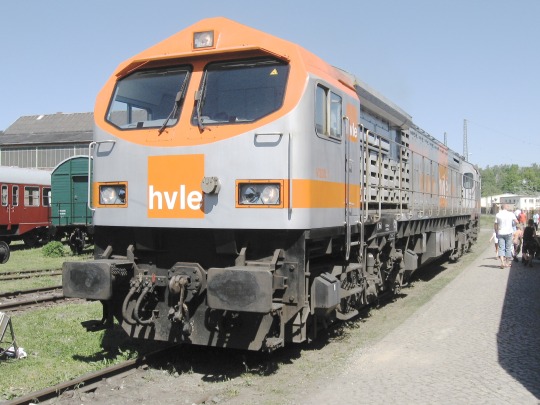
But in the 2000s, things were changing. Liberalisation meant that more and more companies were running services all throughout Europe. The busy main lines were electrified, but many of the border crossings weren't yet, so there was a new need for big six-axle diesel locomotives.
The big beneficiary of this was EMD from North America, who were already supplying such locomotives to Great Britain. The rail companies there needed these machines to replace unreliable British-built power, and to replace environmentally friendly electric locomotives, because most of the British network is not electrified and the few sections that are have way too much traffic on them.
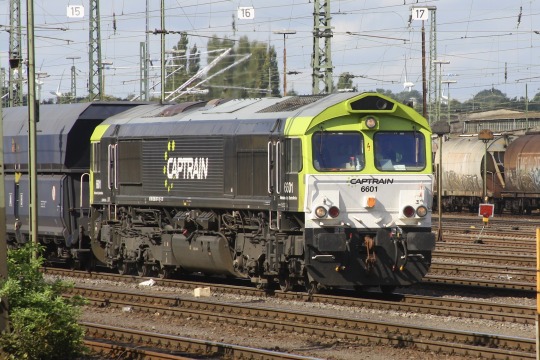
The Class 66 is an ugly mess, designed by figuratively building a metal shed in the inside of a tiny British rail tunnel. It's so noisy that drivers in Norway get hazard pay for being in them. But it works and it was mass produced, and a lot of them made their way to the continent in short order.
Other companies wanted in on that business. Voith decided to enter locomotive building after previously supplying traction equipment. They had high hopes for their Maxima series of locomotives, which they started building in 2008, and they had their own leasing company. They did a lot of marketing and the machine won prestigious design awards.
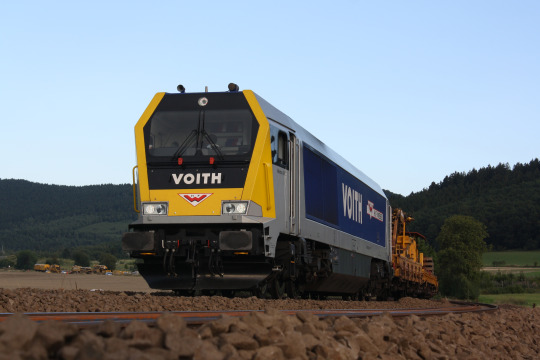
At one point they had a hundred pre-orders. In the end their own leasing company folded, and they only built twenty, which they didn't even manage to sell that quickly. Nowadays they've stopped producing locomotives again.
General Electric, the other North American locomotive company, wanted in on that action as well. Sure, it hadn't worked with the Blue Tiger, but years had passed and things were different now. For their new product, the PowerHaul, they decided to follow what EMD had done. They started with the class 77 for the British market, first shown at Innotrans in 2010.

Then they wanted to work their way out to wider Europe, with a special continental version that was designed with a bigger shell to match the larger tunnels on the continent. That way they weren't quite as cramped. EMD had considered a similar idea, a European-sized class 66, but decided against that.
GE also did not intend to make them themselves. Instead after the initial batch of British 77s, they transferred production to their Turkish partner Tülomsaş, who supplied some more British ones and the ones for central Europe. 29008 is one of them.
In the end all of these plans fell through. A lot of the international border crossings did get electrified much quicker than the diesel sellers had hoped. The one near where I live, the Montzenroute, started electric running in December of 2008, and it was actually the makers of electric locomotives who made bank off of the new international railway world. Here is a Bombardier TRAXX electric locomotive during the first week that freight trains from Germany to Belgium were running with electric power, just a few hundred meters from the border.
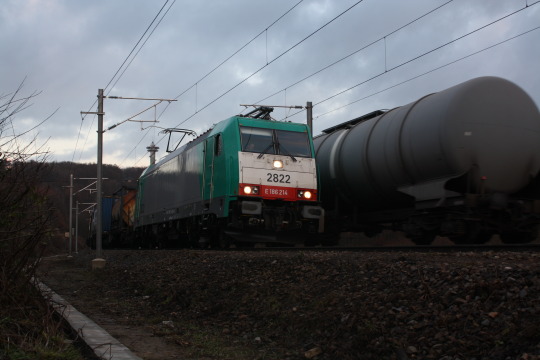
But the business changing is one thing, the story of the PowerHauls seems to be even more complicated. After all, GE did have a launch customer for their PowerHaul, in the form of HHPI. The locomotives were built, painted in HHPI colors, and tested. And then… well, nothing. They never entered service, instead sitting for years in Cottbus, Germany. I have no idea whether they ever got approved for service in Germany. Finnish Wikipedia says "HHPI had no use for them", but that sounds like a euphemism. Clearly HHPI had some use for powerful locomotives, they've recently taken delivery of some Stadler EuroDuals.
The EuroDual and the closely related Euro9000, pictured below, seem to be the solution to the six axle diesel curse though the conceptually simple but technologically difficult trick of simultaneously being a very powerful electric locomotive as well. They have already delivered more of them than Voith Maxima, GE Blue Tiger and GE PowerHaul combined. Sorry for the pictures, they don't park the locomotives well for good photos at Innotrans.
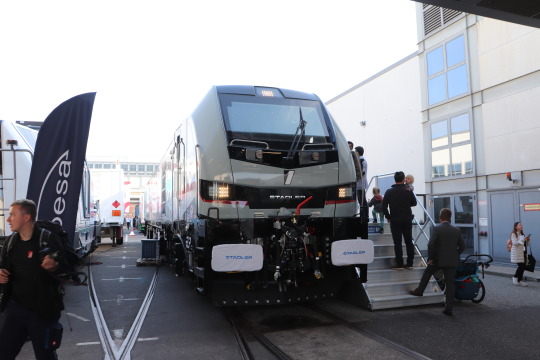
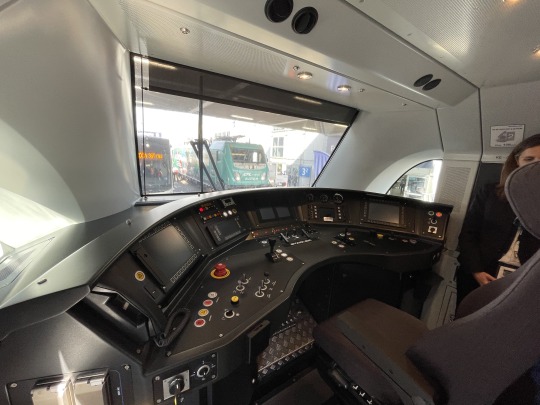
Also, GE was not able to find any customer in Germany, nor in Sweden, where some units of that type were tested at some point. Locomotives of that type were built for Turkey, though, and I haven't heard anything negative about them there. Those were also at Innotrans, in 2014.
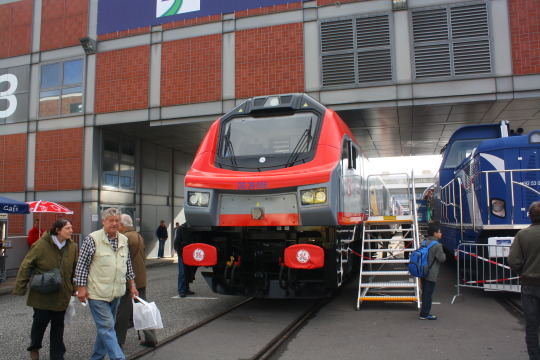
And then, years after everyone had forgotten about these machines, they suddenly turned up in Finland, in the hands of North Rail (formerly Operail), one of the few private companies there. That required at least new couplings, new axles (Finland has a different rail gauge, the measurement of how far the rails are apart), probably adjustments to the breaks, new train control systems and so on.
It's possible that North Rail was thoroughly convinced by the advantages of GE's concept or something, but I think it's far more likely that they just got a really good deal because GE was happy someone took them off their hands.
The reason they're in Finland is almost certainly that Operail needed some cheap machines that weren't doing anything, and these units were just that. But why were they not doing anything? Why were these machines doomed to sit in Cottbus for years, essentially still in new condition, painted for an operator that didn't want them? I'm sure you'll find plenty of theories if you look on online forums, and it's even possible that one of them is the truth, but unless some rail journalist decides to really dig into that, we'll probably never know for certain.
If you allow me to speculate: It certainly doesn't sound like a success story, and there have been all sorts of other stories where trains didn't get approval to run in the country they were ordered for, or had severe technical defects. Ask an Austrian rail fan about the Talent 3, a danish about the IC 4 or a dutch or Belgian about the Fyra to get some really fun rants. I don't know if these locomotives belong in that hall of shame, but it would certainly be an explanation.
My guess is that there won't be any more of these machines ever. GE Transportation doesn't even exist anymore, the whole part of the business got sold to Wabtec a few years ago. But if these machines are doing well in Finland now, good for them! Finally someone found something to do with these weird-looking units.
16 notes
·
View notes